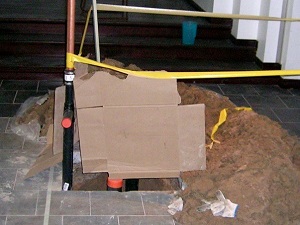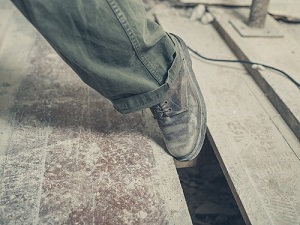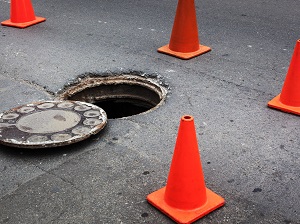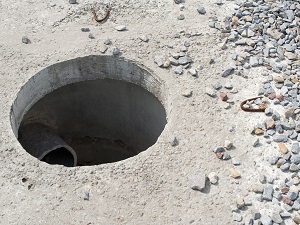Floor holes aren't just holes in the floor. This is one area where many workers forget to take the necessary safety measures to protect themselves and their co-workers, or at minimum throw some caution tape up and call it good.

Floor holes can be found inside of buildings, in shops or warehouses, on working platforms, on roofs and in outdoor working environments.
OSHA defines a floor hole as a gap or open space in a floor, roof, horizontal walking-working surface, or similar surface that is at least 2 inches (5 cm) in its least dimension.
Examples of Floor Holes:
- Roof drains
- Concrete penetrations for piping and ducts
- Skylights
- Unfinished stairways or missing steps
- Pier drilled holes
- Excavations
- Chute floors
- Drains
- Mechanic pits
- Holes created during construction
- Rotting floors that could give way
- Working platforms for silos, tanks, etc.
OSHA General Industry Standard 1910.28(b)(3)(ii) states each employee is protected from tripping into or stepping into or through any hole that is less than 4 feet (1.2 m) above a lower level by covers or guardrail systems.

OSHA General Industry Standard 1910.28(b)(3)(i) states each employee is protected from falling through any hole (including skylights) that is 4 feet (1.2 m) or more above a lower level by one or more of the following: Covers; guardrail systems; travel restraint systems; or personal fall arrest systems.
Floor holes can be guarded or protected by guardrails, covers, and other conventional fall protection methods.
- Walking and working areas and rooftops should be inspected for potential floor holes, including skylights.
- Roof drains and other penetrations should be covered or protected to avoid trip hazards.
- Guardrails used around floor holes must meet specific construction guidelines so as to prevent falls to lower levels and added on all unprotected sides or edges.
- Body belts are prohibited and may not be used as part of a fall protection system.
OSHA Construction Standard 1926.502(b) Guardrail systems states that guardrails must have a top rail of 42" high and strong enough to withstand 200 lbs. of force, mid rails must be 21" high and strong enough to withstand 150 lbs of force and When guardrail systems are used at holes, they shall be added on all unprotected sides or edges of the hole.

When used to protect employees, hole covers must be able to support 2x the weight of the employees, equipment, and their materials.
Covers need to be color coded or marked with the word "Hole" or "Cover".
OSHA Standard 1926.501(b)(4) says that Each employee on walking/working surfaces shall be protected from falling through holes... and from tripping in or stepping into or through holes (including skylights)...

- Hatchways and chute floors are also considered floor holes and must have protection.
- A hinged door may be used to prevent accidents involving hatches and chutes that may be located on industrial floors or roofs.
- Removable railings should stay in place, even when the opening is not in use.
- When materials are going into a floor chute, protection must be provided to prevent falls through the opening.
Never assume everyone will see the hole and step around it, or think that caution tape is enough. A slip or trip near the hole can result in a serious injury or worse. Proper covers, guardrails and signage must be utilized on and near floor hole hazards.

.jpg)
